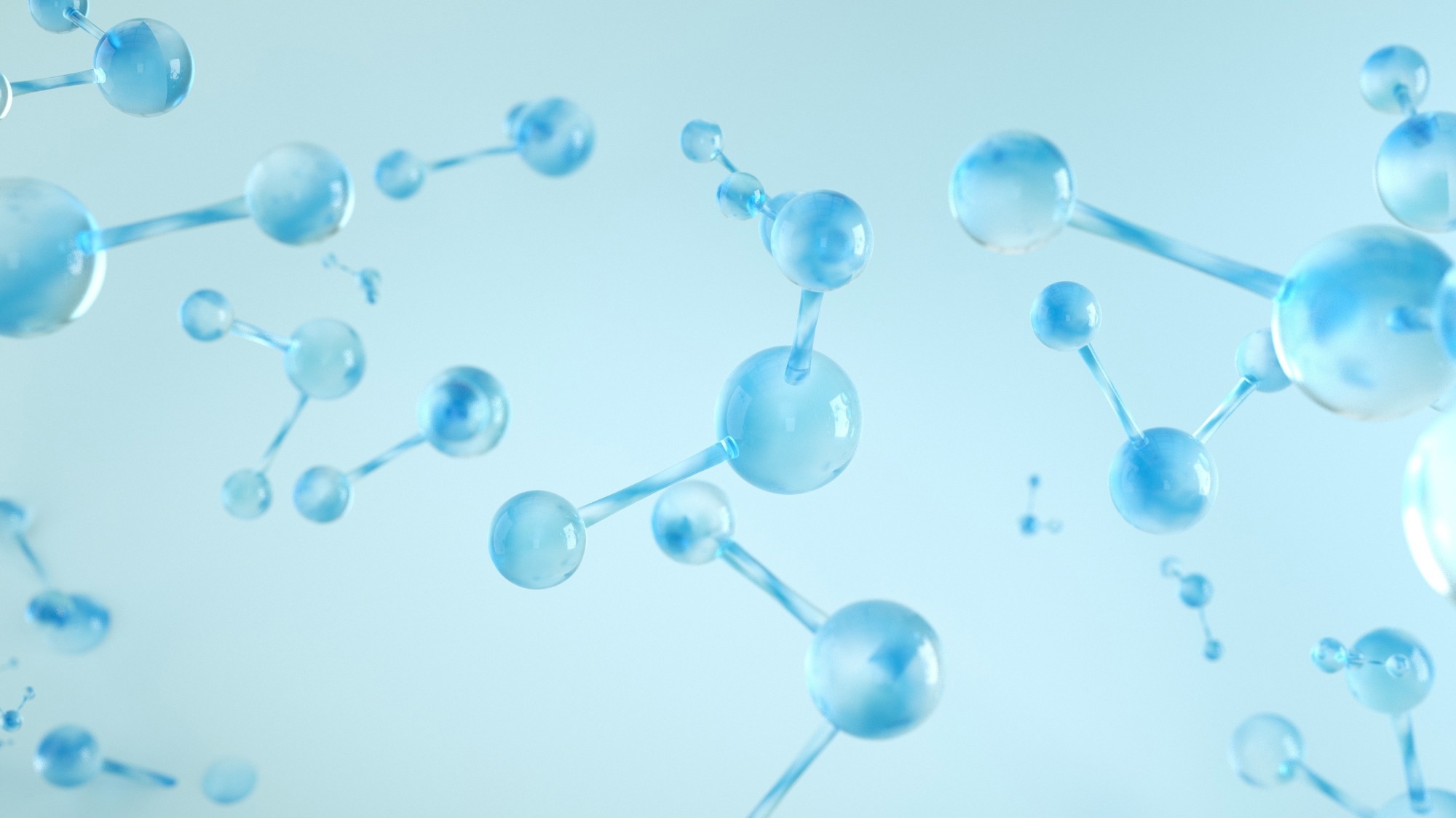Metal-free and metal-oxide doped graphene catalysts show remarkable performance in hydrogen evolution and nitrate reduction. These are key reactions for greener, carbon-neutral manufacturing pathways.
This article provides an overview of graphene doping, highlighting uniquely successful case studies.
 Image Credit: 3DStach/Shutterstock.com
Image Credit: 3DStach/Shutterstock.com
Doping Processes and Graphene
Since its first development two decades ago, graphene has become an extensively used material. From semiconductors to water filtration, the wonder material continues to be explored with fascination by scientists.
One method of exploration is graphene doping, which can be broadly categorized into two approaches: direct synthesis or post-treatment modification.
The direct synthesis approach involves doping graphene with other materials, such as metals, during the graphene growth and synthesis process.
Post-treatment starts with pristine graphene and adds dopants later to adjust its properties and behavior. It's the most-used method in industry, since direct synthesis is often limited by compatibility.
Different Doping Methods
Among post-treatment graphene doping methods, wet techniques are the most often used. Acid treatments, typically involving sulfuric acid (H2SO4), nitric acid (HNO3), or hydrochloric acid (HCl), modify graphene's surface to improve its electronic properties. Nitric acid, in particular, is efficiently used in p-type graphene doping.1
Researchers have also used metal chloride solutions to introduce metal atoms, such as silver (Ag), molybdenum (Mo), and palladium (Pd), which gives graphene finely tuned catalytic and conductive behavior.1
On the other hand, dry doping methods offer more control over electronic tuning. One key approach, electrostatic field doping, adjusts graphene's bandgap by varying an electric field applied perpendicularly to the material, shifting its Fermi level and altering its band structure.
Thermal evaporation is another popular dry doping technique where a thin film of the intended material is deposited on the graphene surface to create both p-type and n-type dopants. Dry thermal doping techniques involve treating graphene at extremely high temperatures, exceeding 800 °C, where the target material’s atoms replace carbon atoms of graphene.
Finally, plasma treatments are emerging as a promising route for graphene functionalization.1 These treatments ensure that graphene is imparted with the preferred properties to facilitate electrostatic reactions.
Get all the details: Grab your PDF here!
Electrocatalysis with Doped Graphene
Doped Graphene Catalyst for Hydrogen Evolution Reactions (HER)
A recent study demonstrated a nitrogen- and phosphorus co-doped graphene catalyst that pushes hydrogen evolution reactions (HER) to new heights.
Published in Energy & Fuels, the researchers used a controlled thermal process to anchor nitrogen and phosphorus atoms directly into graphene's carbon matrix, altering its electronic landscape.
Structural analysis showed the formation of five- and seven-membered carbon rings, which increase the number of active sites for electron transfer. In alkaline potassium hydroxide (KOH) media, the material demonstrated outstanding stability throughout repeated catalytic cycles.
The result is a metal-free, codoped carbon catalyst that matches or surpasses the efficiency of traditional metal-based systems. It's particularly valuable for biomass-assisted hydrogen production, where cost, durability, and scalability are critical.2
 Image Credit: Krot_Studio/Shutterstock.com
Image Credit: Krot_Studio/Shutterstock.com
Palladium/Palladium-Oxide Doped Graphene Oxide Catalyst Boosting Electrocatalytic Conversion of Nitrate into Ammonia
Ammonia (NH3) is gaining attention as a carbon-free energy carrier, but electrochemically reducing nitrate to ammonia remains a complicated challenge. Palladium/palladium oxide (Pd/PdO) doped graphene oxide (GO) catalysts are proving to be critical in boosting the process efficiency.
Researchers have addressed this with a new Pd-PdO-doped GO composite catalyst that enhances both reaction efficiency and selectivity. The Pd material enhances the adsorption of hydrogen during the reduction process, while palladium oxide boosts nitrogen adsorption, thereby increasing the production of ammonia.
The composite achieved an ammonia yield of 5456.4 ± 453.4 µg/h/cm2 at -0.6 V, significantly higher than that of conventional catalysts. Nitrate conversion reached 7381.1 µg/h/cm2, with the catalyst favoring ammonia production with a selectivity value of 74.9 ± 4.4 %.
Even after 13 repeated cycles of electrocatalytic reduction at -0.4 V, the catalyst maintained the efficiency of the process, proving to be key for eco-friendly ammonia synthesis systems.3
Read more about challenges in catalysis here!
Future Perspective
While doped graphene is highly beneficial for electrocatalytic reactions, scaling these advances for industry-level applications remains a major challenge. Future research is likely to focus on designing sensors and catalysts that maintain their performance over long operational lifetimes, resisting dopant leaching, structural fatigue, and chemical degradation.
The next frontier lies at the intersection of materials science and digital technology. By integrating AI-driven modeling and advanced simulation tools, researchers aim to predict and control doping behavior with atomic precision.4
As these technologies mature, doped graphene is set to anchor a new generation of sustainable, high-performance electrochemical systems, bridging clean energy production, environmental sensing, and scalable green manufacturing.
Further Reading
- Oh, J. et. al. (2014). Graphene Doping Methods and Device Applications. Journal of Nanoscience and Nanotechnology. 14(2). 1120-1133. American Scientific Publishers. Available at: https://www.doi.org/10.1166/jnn.2014.9118
- Barreiro, I. et. al. (2025). A New Doped Graphene-Based Catalyst for Hydrogen Evolution Reaction Under Low-Electrolyte Concentration and Biomass-Rich Environments. energy*fuels. 39. 4515 - 4524. Available at: https://doi.org/10.1021/acs.energyfuels.4c06084
- Ebenezer, J, et. al. (2024). Laser-Induced Pd-PdO/rGO Catalysts for Enhanced Electrocatalytic Conversion of Nitrate into Ammonia. ACS Applied Materials & Interfaces. 16. 36433 - 36443. Available at: https://doi.org/10.1021/acsami.4c06378
- Zhou, Q. et. al. (2024). Optimizing Graphene Dopants for Direct Electrocatalytic Quantification of Small Molecules and Ions. Catalysts 14(1). 8. Available at: https://doi.org/10.3390/catal14010008
Disclaimer: The views expressed here are those of the author expressed in their private capacity and do not necessarily represent the views of AZoM.com Limited T/A AZoNetwork the owner and operator of this website. This disclaimer forms part of the Terms and conditions of use of this website.